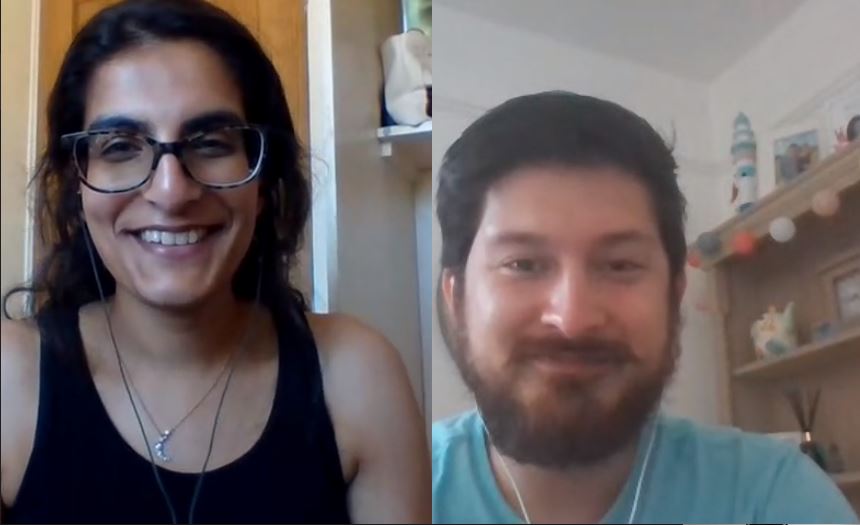
6 weeks. That’s the time it took to turn an idea into a fully functioning service.
We didn't have time to design it, so instead we thought about how we could use service and business design methods to simplify decision-making and collaboration for our colleagues.
The task
Faced with a potential surge in hospital demand because of coronavirus, our health teams were tasked with speeding up hospital discharges to make sure there was enough space.
It was up to our social care and community health teams to make sure these people had safe and sustainable placements while they got back on their feet.
Many adults leaving hospital can do so without the need for additional support. Others might require:
- additional care at home
- short-term therapy in a different setting from a hospital
- a residential placement.
This is often facilitated by social care colleagues.
To help ease the pressure on these pathways, Adult Social Care were increasing capacity in the care market, looking into sites that could support short term reablement spaces.
With nothing but a big blank sheet of paper and some determination to support our project group, we set out to design the pathway to allow people to be discharged from hospital safely when they were unable to return home.
Less about the designing and more adding value
This was urgent work and we knew it would progress with or without us, so we thought about how we could add value to the project group. Design is often about facilitation, challenge and guiding stakeholders to make good decisions. We felt we could still do this, even in though time was tight.
This wasn’t a traditional design project. We didn’t really have the right conditions to do much ‘discovery’, and we didn’t have a fully-fledged brief.
As both of us had some previous knowledge of hospital discharges we spent a couple of days starting with assumptive mapping.
We used Miro , an online ‘white-board’ tool, to get our ideas on what the pathway could look like. This felt like the best approach to visualise and help others see our first draft, so we could bring them with us.
Finding out what works
The biggest change was our style of collaboration. Normally, we'd meet face to face with our stakeholders and work alongside them to come up with the pathway in a workshop. We had to rethink this approach by ‘stress testing’ a pathway we'd designed with the provider and the commissioner.
We found stakeholders didn’t really engage with a big complex map on Miro. Instead we went back to basics, moving to MS PowerPoint. This worked for stakeholders to easily access and read the pathway at pace.
We started testing the pathway across the health and care system. The additional beds would be available across the county. Essex is one of the largest counties in the country. The beds would be available to adults 'stepping down' from 5 acute hospitals, community hospitals and 'stepping up' from the community.
Walking stakeholders through
We had over 100 stakeholders from social care, community health and hospitals.
These colleagues needed to know that there were spaces to discharge people to. We were able to give them the confidence in the system they needed to discharge people to these spaces. By walking partners through the pathway we were able to open up meaningful discussions. MS Teams worked incredibly well for facilitating these system wide discussions.
Each virtual meeting presented a new dimension to the response to coronavirus. For example, we learnt how some adults left hospital and then their condition deteriorated a few days later. This meant we needed to be flexible with our objectives around length of stay, while maintaining good flow into and out of the additional beds.
The people behind the numbers
Often the feedback we hear is about how many people have been through the service or what percentage of success we have had. What has been great in this work is some of the outcomes we have heard. It has brought a human element to the work.
For example, we heard about an adult who was on a palliative pathway. The patient made a quick turnaround and was taken off the pathway by the GP. We read about people’s delight in being able to make contact with loved ones through the technology provided on-site. Our personal favourite was hearing about people enjoying ice-cream outside on a sunny day, which must be such a lovely feeling after coming out of hospital.
What we learned
The experience has shown us that:
- you don’t need to meet face to face for meaningful engagement
- you can gain support when you make something look familiar, simplify its complexity and make it easier to understand (even when it’s not)
- our role is to enable easier decision making which is so important at the moment
3 comments
Comment by Emma posted on
Looks like a fab piece of work and real added value. Love that you dispatched with traditional thinking and kept adjusting as you went. It clearly not only sped up the normal process, but also ensured that the quality of the solution didn't suffer.
Well done!!
Comment by Bhupinder posted on
Thanks Emma!
Comment by Martin posted on
Great work, and "ice-cream outside on a sunny day", that's got to feel satisfying.